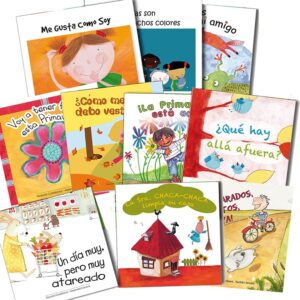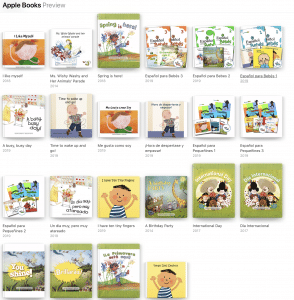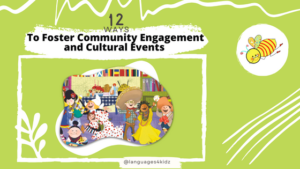First Things First
How can you help your kids acquire an additional language through stories?
First of all, you must provide children with lots of picture books from the time they are born.
Set times during the day to read aloud to them. During the day time use puppets and props while reading.
If right before bed time, keep in mind that reading to them provides precious moments with wonderful chances to strengthen the special bond between you and your little ones.

Use reading as a magic tool to expose your child to the language you want them to acquire.
Make it fun and natural by going a little further and having simple but interesting conversations based on the themes of the books.
Reading Aloud: A Must
Reading-aloud provides a powerful means for helping children of all ages develop their language skills, extend their vocabularies and their understanding of the world around them.
If you want your children to be bilingual, reading-aloud is even more important. Reading aloud provides the perfect opportunity for them to expand their vocabularies, learn how to make the sounds of the target language, learn about speech patterns, and gain knowledge and respect for those who speak that language and their culture.
Tips
Following are some suggestions when reading aloud to little ones in another language:


- Make reading to your child an enjoyable and fun activity.
- Provide children with ample time for listening and for getting used to the new language. You may start with short stories in English and Spanish with lots of illustrations and easy vocabulary such as the stories in Languages4kidz Picture Books. For example in the book “Can you see what I see?“/”¿Puedes ver lo que yo veo?” introduce very young children to their 5 senses and how they can use them in their everyday life with simple, engaging text and colorful artwork.
- Begin by reading the title of the book, the author and the illustrator clearly and with lots of enthusiasm.
- As you begin to read the book, suggest things to look and listen for in the story. Some of our picture books are full of onomatopoeic sounds that are fun for children to make as they are read to, for example “Ready, set, go!”/ “¡Preparados, listos, ya!”
- Use your voice in different ways and with the proper intonation. Add high or low pitch where it’s appropriate to maintain children’s attention. In our story “Beary makes new friends”/”Osi hace nuevos amigos”, there are 5 different characters. Young children will enjoy very much the intonation, pitch and pace you may use for each one and try to imitate you by repeating the lines of each character.
- Stop frequently to: Encourage your child to point at the pictures and name them. Ask easy questions that children may answer with a “Yes” or a “No” or by pointing at pictures or using short phrases.
- Conclude by waving bye-bye to the book and maybe adding a typical phrase at the end, such as, “Snip, snap, snout this tale is told out”/“Colorín colorado este cuento se ha acabado”.
- Sing a song related to the story. Languages4kidz Picture Books on the Apple Books Store and Google Play feature a song at the end of each reading.


Keep in mind that children love being read the same books over and over again and that repetition is essential to learning an additional language.







